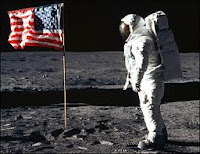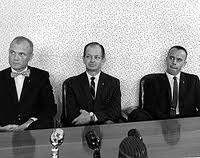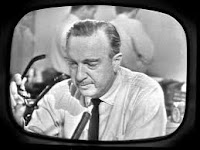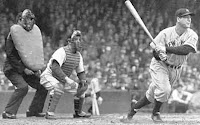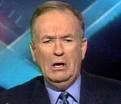
There has been a nostalgic theme to Irresistible Targets lately, and when, inspired by John Harvey to think about my 'playlist' for the month of June, I realised that the two new discs which have been spending all the time in the scanner are both by musicians I've been listening to for at least forty years, I thought it worth indulging tha nostalgia just a little bit more. I realised too that, in the wake of the Michael Jackson death-circus, they both took me back to a time when I really got caught up in music for its own sake, rather than caught up in the multi-media cult of the artist, even though the cults in those days were nothing like the marketed hype of today. And both of these discs play consciously with their roots in that time, though in different ways. And it was only while thinking about these two discs that I realised there was a direct, if tenuous, link between Gary Burton and Al Kooper, a link constructed by the way in which I pursued associations in the music I loved.
Gary Burton's
Quartet Live sends you right back to the

Sixties because it's packaged in a cover by none other than Peter Max. Of course, as it's a CD and as I've been wearing glasses for the past few years, it doesn't have quite the impact it would have had as a LP jacket, but my generation has learned to live with that. It always amazes me, in the world of digital downloads and Ipods, how much impact LP covers had on their audience; I can think of dozens of records whose covers caught my attention before some information on the sleeve caused me to give the record a try or discard it.
It's a summertime record, and it's been playing through the current British 'heat wave', the kind of music that accompanies sitting at the desk with sunshine and breeze blowing through the window, and I've been feeling that way about Gary Burton's music ever since I was in college. I don't remember whether I was drawn to Burton by Larry Coryell, the guitarist in his original, 1968, quartet; I remember I used to play Coryell's Lady Coryell incessantly, despite my roomates' complaints about the awful vocals, and nowadays people look at that as one of the first 'jazz-rock' albums (I'll be writing more about this when I cover the David Sanborn concert I saw the other night). But since I think my first Burton

album was 1969's Throb it's more likely I was drawn to it by the presence of fiddler Richard Greene, from the last incarnation of Kooper's Blues Project (and there's the link) which became Sea Train. He'd played with Bill Monroe and also played bluegrass with the Blue Velvet Band, and the idea of his joining a vibraphone-led jazz band must've seemed strange. But this was the time of Herbie Mann's
Memphis Underground, when Kooper was producing records by the Don Ellis Orchestra, and of course the Electric Flag and Kooper's own Blood Sweat & Tears issued their first records, which are still two of my favourites. Throb's title track is a haunting piece composed by Mike Gibbs, who contributed three other tunes. The only member of the original quartet still around is bassist Steve Swallow, drummer Bill Goodwin replaced Roy Haynes and Coryell gave way to Jerry Hahn, from the rock band The Serfs, who also produced the great keyboardist/singer Mike Finnigan.
Although
Quartet Live has the feel of an anniversary album, it's not. Guitarist Pat Metheny Metheny first joined Burton in a two-guitar quintet (along with Mike Goodrick) for
Ring (1974) which also played Eberhard Weber's bass off against Swallows. Metheny played on two more records,
Dreams So Real and the classic
Passengers, again with Weber, before going on to the huge stardom he now enjoys. But he's already done two 'reunion' albums with Burton;
Reunion (1990) and
Like Minds (1998, with Haynes, Chick Corea and Dave Holland). In fact, Quartet Live opens with 'Sea Change', a Corea composition Burton's done with the pianist many times. There are afew other familiar tunes revisited, most notably Metheny's lovely 'B&G(Midwestern Night's Dream)' but the range of writers includes Swallow, Burton (never a prolific composer), Keith Jarrett, Carla Bley, and Duke Ellington's 'Fleurette Africaine'. What Burton, with his four-mallet playing, and Metheny, with his speed, have in common is a sense of weaving the many notes they play; never displaying virtuousity for its own sake (well, OK Metheny, on his own work, sometimes does). Swallow fits this layered approach perfectly, and the addition of Metheny's current drummer, Antonio Sanchez, is perfect because he provides a rhythmic drive, in fact, reminds me much more of the muscular Haynes than of other more gentle Metheny drummers like Bob Moses. It's a record that's more fun than its cover.
Al Kooper's White Chocolate

is a sequel of sorts to Black Coffee, but appears to have been released only by Sony Japan (and through Kooper's own website), in 2008. It was the disc that was getting the most playtime in my office during those wretched rainy weeks of June, when you ask yourself why you're living in Britain and you listen to music that makes you think of home. I go back with Kooper all the way to the Blues Project, 1966 or so, and this record has some of the eclecticism that made the Project so good when they were good. In fact, it's very much a valedictory work, with a lot of familiar (by other people) material. The piece that will get the most attention is probably a slowed down version of It Takes A Lot To Laugh (It Takes A Train To Cry), the Dylan song Al did with Steve Stills on
Super Session. Of course Al is today remembered primarily as the guy who slipped into the organ chair and added the riff on Dylan's 'Like A Rollin Stone'. As he said in a piece about
White Choc written by Mark Gould, 'Ahhhh, it's just great to be remembered for something other than bombing the World Trade Center or shooting Jack Ruby.' Yes, I know, nobody shot Ruby, but you get the point!
But there are also covers of the classic 'I Who Have Nothing,' Fred Neil's 'Candy Man' (a huge hit for Roy Orbison), Otis Redding's 'I Love You More Than Words Can Say' (written by Eddie Floyd and Booker T Jones), and two Kooper kollaborations with Gerry Goffin, apparently done by email. There is also a eulogy to Stax, one of the kind of songs Stax themselves used to do so well, which features Booker and Duck Dunn and Steve Cropper and allows Al the chance to yell 'play it Steve' just like Sam Moore did on Soul Man (by the way, when I do write that Sanborn piece I will be mentioning Sam's singing with him). Al's voice is weaker than it was (he's 65, and has suffered a number of serious illnesses, including a brain tumour and a near-loss of eyesight) but since at his peak he was once described as sounding like a soulful asthmatic, it may not have quite the pop the song demands, but it is great fun and sounds great behind him, and since Stax was always the inspiration behind his horn charts, it makes sense.
The record features vocals by the exquisite Catharine Russell and

Sherryl Marshall, who go all the way back with Al to
Child Is Father To The Man that first BS&T album, which may still be my favourite rock record of all-time. Russell, a true soul diva, even gets to sing lead on Hold On. Like almost all Al's albums, it's uneven; he's too indulgent of his own cleverness to simply pay to formula, and some of his favorite quirks don't always hit the right note, but there are far more hits than misses. And yes, one of the songs sounds an awful lot like on of the ones of Black Coffee, but I won't say which. But there are also a couple of touching takes on growing old, Al originals, 'You Never Know Til You Get There' and '(I Don't Know When But) I Know That I'll Be There Soon', both featuring Al Gorgoni on acoustic guitar, another of those session guys who popped up on Al's album credits and very few others. It may sound like I'm off on a nostalgia trip, but I played and replayed this record with immense satisfaction, and you tell me how many records you can say that about today?
Irresistible Turntables: The June Playlist:
Gary Burton '
Quartet Live' (Concord 2009)
Al Kooper '
White Chocolate' (Sony Japan 2008)
Jack DeJohnette's
Parallel Realties 'Live' two-discs from Philadelphia, 1990, on the semi-bootleg German Jazz Door label, with Metheny, Herbie Hancock, and Dave Holland. Harder driving than the studio albums, this one really moves.
for the Summer Soulstice, June 21st:
Taj Mahal
The Real Thing, the phenomenal 1971 Columbia live album with a four-tuba horn section. Key track: 'Ain't Gwine Whistle Dixie (Any Mo')' for its solos by three guys less celebrated than they should be: Howard Johnson (sax), John Hall (guitar) and John Simon (piano—producer of that first BS&T album, as well as the Band's first two).
 Stax Soul Power
Stax Soul Power (Mojo 2/07) on 21/6, especially William Bell's 'I Forgot To Be Your Lover'
Baby Washington (pictured right)
I've Got A Feeling (Stateside 2005) a great best-of compilation which includes the best cover of I'm On The Outside (Looking In)
Isle Of Wight/Glastonbury /Hyde Park displacement therapy:
Neil Young (Reprise 1968),

that first solo album, of which I've still got the rare, title-less LP cover, isn't really solo since its mostly-unbilled players include Poco's George Grantham, Ry Cooder, Jack Nitzsche, and Jim Messina, along with the wonderful Brenda Holloway leading a great chorus. To stay in that 40-year old groove,
Sugar Mountain (Reprise 2008), is the 1968 live Canterbury House solo concert, which is Neil at his most vulnerable, and sounding very much in, and of, that time.
 I'm not sure if, strictly speaking, The Whaleboat House qualifies as a forgotten book--after all it won the CWA Silver Dagger for best debut, and his second novel, The Savage Garden, was a Richard & Judy finalist, but as he had managed to slip under my crime-reviewing radar, I thought I'd revisit it, to see if it deserved its award. And I'm pleased I to say, it probably did, though it's also fair to ask how many award winning books have since been retitled by their publishers? Maybe they assumed a British audience wouldn't figure out it was a place name, and certainly wouldn't know how to pronounce Amagansett (it would come out Uh-MAG-an-set). But the original title was Amagansett (see below left) when it was published in 2004 (and it's a place name, pronounced AM-a-gan-set, just like it looks) but perhaps that name looked too serious for a Dagger winner. Even under its new title (which I confess actually works better) it's had two different paperback editions, the first pitching it more as a crime story, as befits a Dagger winner, the second positing it as a sort of historical piece of serious fiction, dirty realism set in the immediate post war, with a romantic twinge, as befits a Richard & Judy nominee (see below right). The problem with the latter approach is that although Mills writes well, and his period setting is drawn well and intriguingly, the story is, at heart, a mystery, and a tale of revenge.
I'm not sure if, strictly speaking, The Whaleboat House qualifies as a forgotten book--after all it won the CWA Silver Dagger for best debut, and his second novel, The Savage Garden, was a Richard & Judy finalist, but as he had managed to slip under my crime-reviewing radar, I thought I'd revisit it, to see if it deserved its award. And I'm pleased I to say, it probably did, though it's also fair to ask how many award winning books have since been retitled by their publishers? Maybe they assumed a British audience wouldn't figure out it was a place name, and certainly wouldn't know how to pronounce Amagansett (it would come out Uh-MAG-an-set). But the original title was Amagansett (see below left) when it was published in 2004 (and it's a place name, pronounced AM-a-gan-set, just like it looks) but perhaps that name looked too serious for a Dagger winner. Even under its new title (which I confess actually works better) it's had two different paperback editions, the first pitching it more as a crime story, as befits a Dagger winner, the second positing it as a sort of historical piece of serious fiction, dirty realism set in the immediate post war, with a romantic twinge, as befits a Richard & Judy nominee (see below right). The problem with the latter approach is that although Mills writes well, and his period setting is drawn well and intriguingly, the story is, at heart, a mystery, and a tale of revenge. the immediate postwar fishing community of Amagansett, before the huge boom in the Hamptons, when fishermen still plied their trade in New York's waters (see Joseph Mitchell's exquisite collection, The Bottom Of The Harbor, for a brilliantly realised picture of that industry from the same era). Conrad Labarde is the descendant of Basque fishermen, and works the waters from his shack on the ocean side of Long Island, along with his friend Rollo, the somewhat dimwitted scion of the area's oldest fishing family. It's Rollo who's brought the whalehouse to Conrad's property: and the second title is a far better one for this book; along Amagansett is the setting, it is the whalehouse that sees the story.
the immediate postwar fishing community of Amagansett, before the huge boom in the Hamptons, when fishermen still plied their trade in New York's waters (see Joseph Mitchell's exquisite collection, The Bottom Of The Harbor, for a brilliantly realised picture of that industry from the same era). Conrad Labarde is the descendant of Basque fishermen, and works the waters from his shack on the ocean side of Long Island, along with his friend Rollo, the somewhat dimwitted scion of the area's oldest fishing family. It's Rollo who's brought the whalehouse to Conrad's property: and the second title is a far better one for this book; along Amagansett is the setting, it is the whalehouse that sees the story. . As well as Lillian's death, Conrad is also haunted by his experiences in the war, where he was an assassin, and somehow blessed with luck while those around him died.
. As well as Lillian's death, Conrad is also haunted by his experiences in the war, where he was an assassin, and somehow blessed with luck while those around him died.





